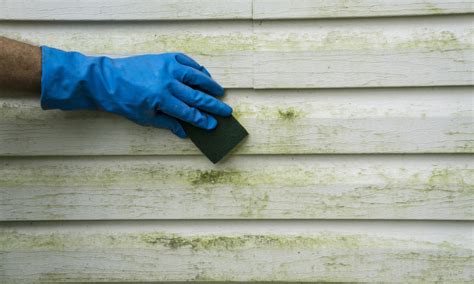How to Get Rid of All Siding Stains: A Comprehensive Guide
Siding stains can dramatically detract from your home's curb appeal. Whether it's unsightly mildew, stubborn dirt streaks, or lingering marks from a clumsy mishap, dealing with these blemishes is crucial for maintaining your home's value and aesthetic. This comprehensive guide will walk you through effective methods to remove various types of siding stains, ensuring your home looks its best.
What Causes Siding Stains?
Before diving into cleaning solutions, understanding the source of the stain is paramount. Common culprits include:
- Mildew and Mold: These fungi thrive in damp, shady areas and appear as dark, often fuzzy patches.
- Algae: Similar to mildew, algae cause green or black discoloration, especially on north-facing sides.
- Dirt and Grime: Everyday airborne dust and pollutants can accumulate over time, leaving behind a dull film.
- Rust: Metal objects like gutters or tools can transfer rust stains to siding.
- Water Stains: Leaks, overflowing gutters, or even sprinkler systems can leave behind watermarks.
- Tree Sap and Bird Droppings: These organic substances can leave unsightly and sometimes sticky residues.
How to Choose the Right Cleaning Method
The best approach depends heavily on the type of siding you have. Different materials react differently to cleaning agents, so it's crucial to identify your siding type (e.g., vinyl, wood, fiber cement) before proceeding. Always test any cleaning solution on an inconspicuous area first to ensure it doesn't damage the finish.
Cleaning Vinyl Siding
Vinyl siding is relatively easy to clean. Often, a simple solution of mild detergent and water, applied with a soft-bristled brush or sponge, suffices. For tougher stains, a pressure washer can be effective, but use a low-pressure setting to avoid damaging the siding.
Cleaning Wood Siding
Wood siding requires a gentler touch. Avoid harsh chemicals and high-pressure washing, as these can damage the wood and its protective finish. A solution of mild soap and water, applied with a soft brush, is usually sufficient. For stubborn stains, consider using a specialized wood cleaner designed for exterior use.
Cleaning Fiber Cement Siding
Fiber cement siding is durable and relatively low-maintenance. Cleaning is similar to vinyl siding: a mixture of mild detergent and water, applied with a soft brush, is usually effective. A pressure washer can be used cautiously, but maintain a safe distance and low pressure to avoid damage.
Specific Stain Removal Techniques
How do I remove mildew and mold from my siding?
Mildew and mold removal often requires a stronger approach. A solution of bleach and water (typically 1 part bleach to 3 parts water) can be effective, but always wear protective gear (gloves, eye protection, and a mask). Apply the solution with a brush, allow it to sit for a few minutes, then scrub and rinse thoroughly. For larger areas, a pressure washer can be useful, but again, use low pressure.
How do I remove algae from my siding?
Algae removal is similar to mildew removal. A bleach solution or a commercial algae remover can be effective. Remember to always follow the product instructions carefully. Thorough rinsing is crucial after treatment.
How do I remove rust stains from my siding?
Rust stains are notoriously difficult to remove. Commercial rust removers are available, but these should be used cautiously and according to the manufacturer's instructions. In some cases, professional cleaning may be necessary.
How do I remove dirt and grime from my siding?
A simple solution of mild detergent and water is usually sufficient for removing general dirt and grime. A pressure washer can be helpful for loosening stubborn dirt, but avoid holding the nozzle too close to the siding.
How do I remove water stains from my siding?
Water stains often require more than just cleaning. If the stains are caused by a leak, addressing the underlying issue is crucial. For superficial stains, a mild detergent and water solution might suffice. In some cases, a specialized stain remover may be necessary.
Maintaining a Stain-Free Exterior
Regular cleaning is key to preventing siding stains. A yearly cleaning, ideally in spring or fall, can significantly reduce the buildup of dirt, mildew, and algae. Proper gutter maintenance and addressing any leaks promptly will also prevent many types of stains from forming.
By following these tips and choosing the appropriate cleaning methods for your siding type, you can effectively remove stains and maintain the beauty and value of your home. Remember, safety is paramount; always wear appropriate protective gear when using cleaning solutions. If you're unsure about any step of the process, consulting a professional siding cleaner is always a good idea.

